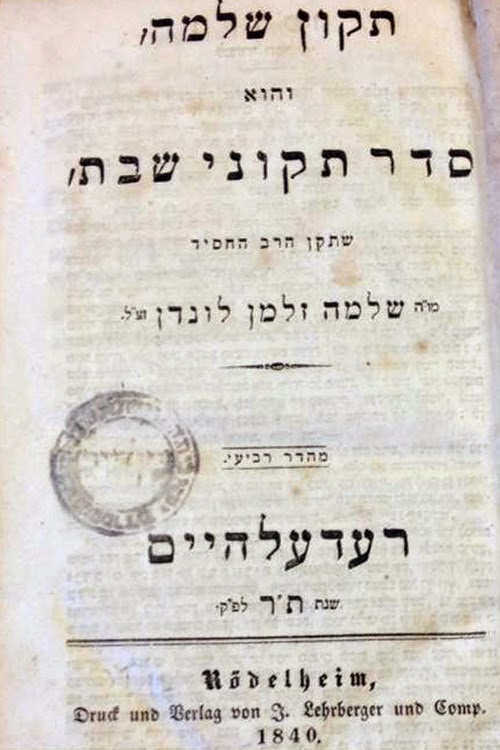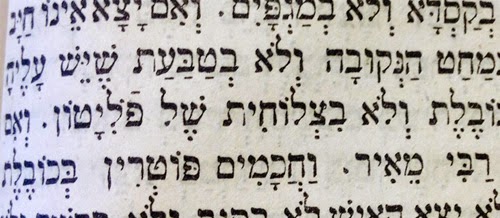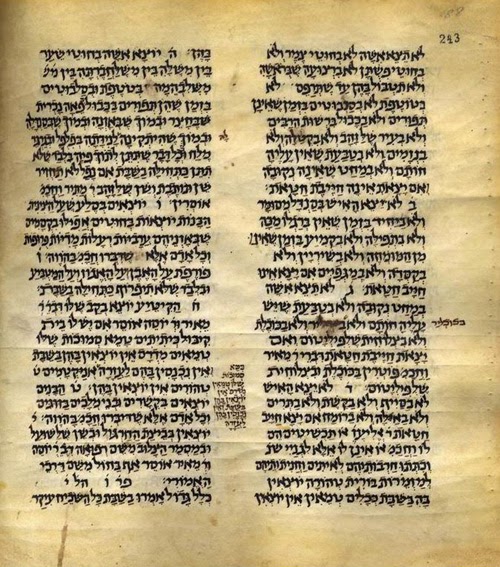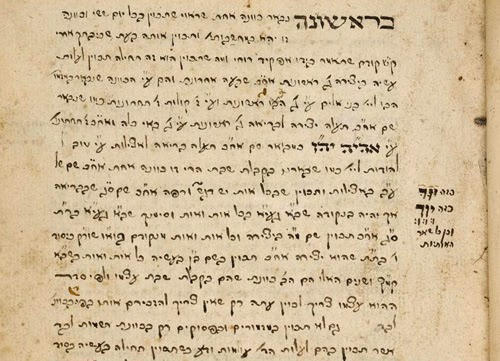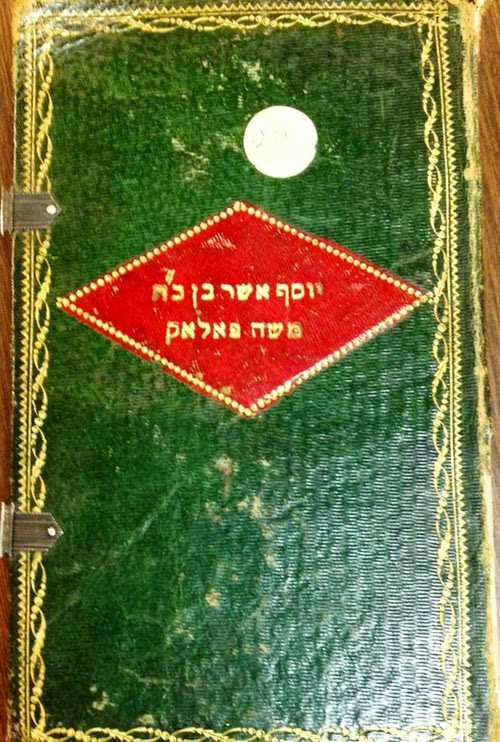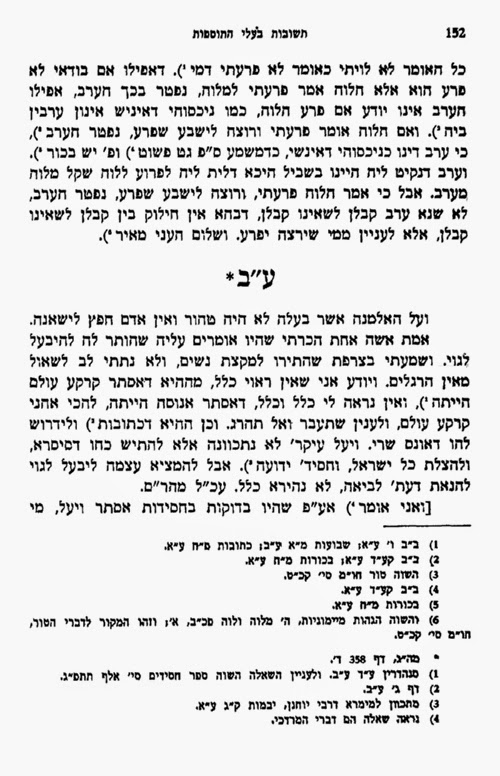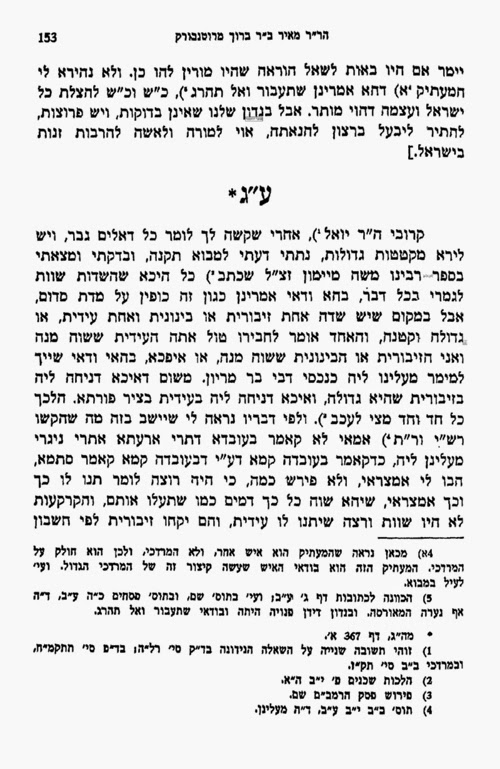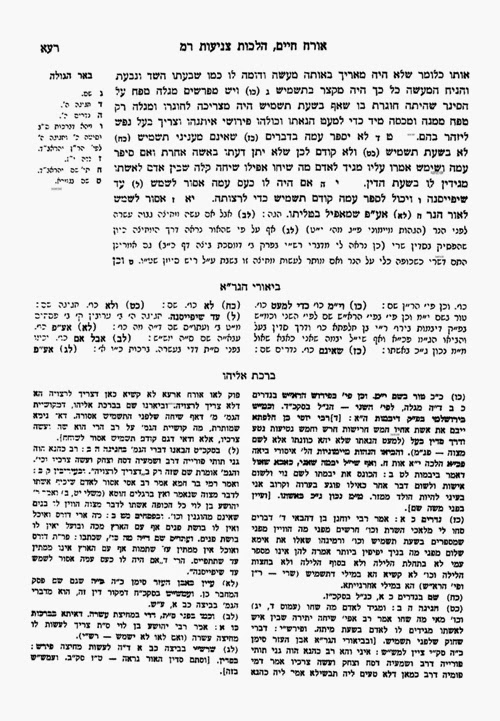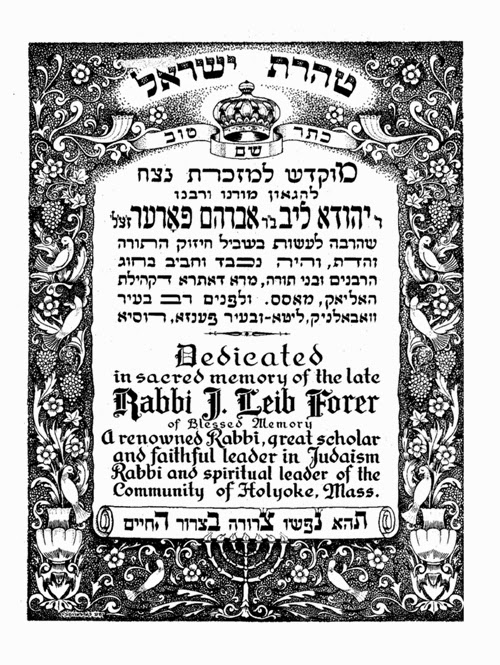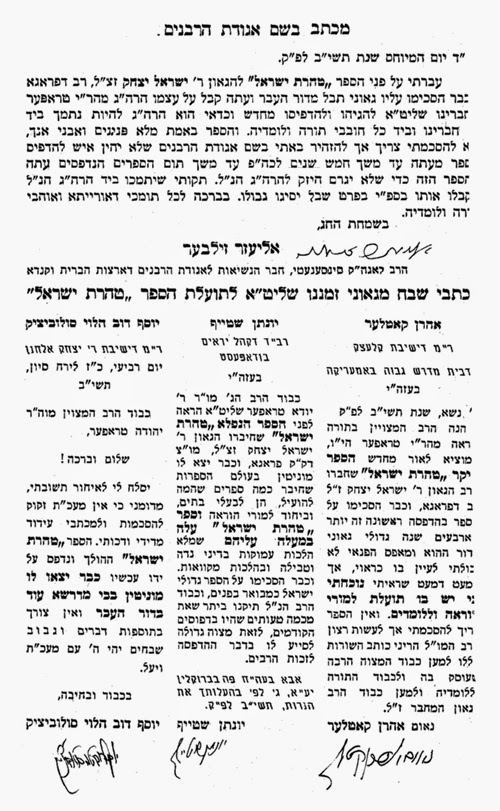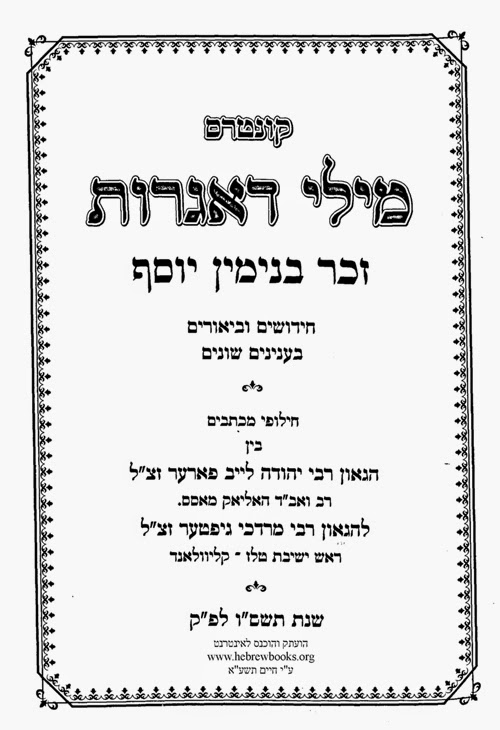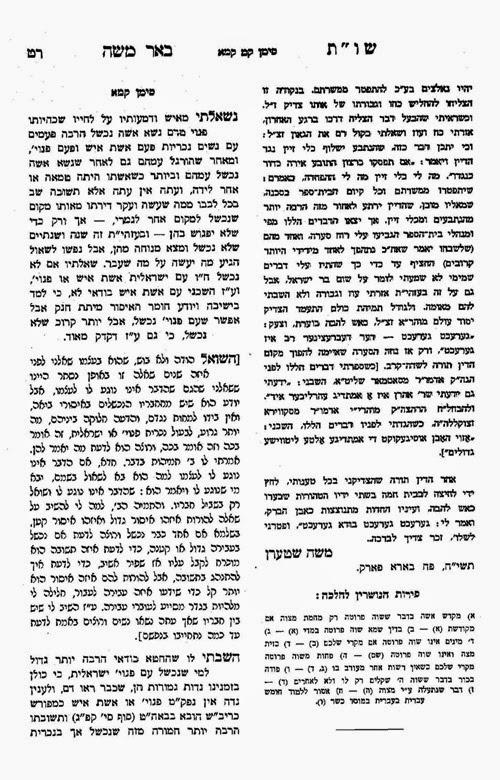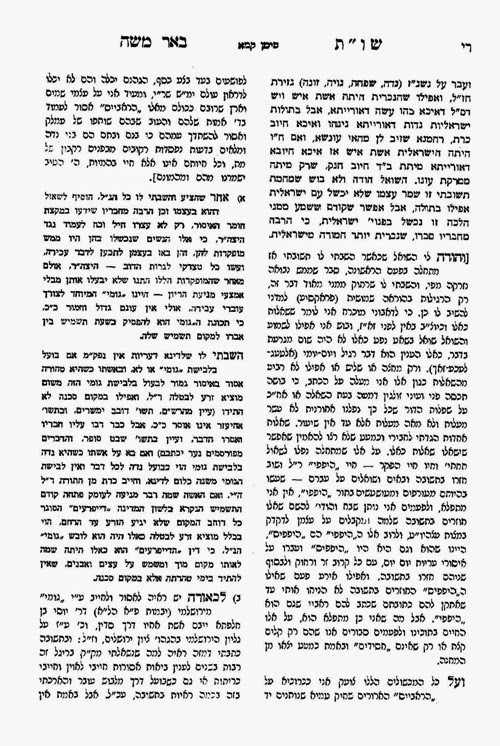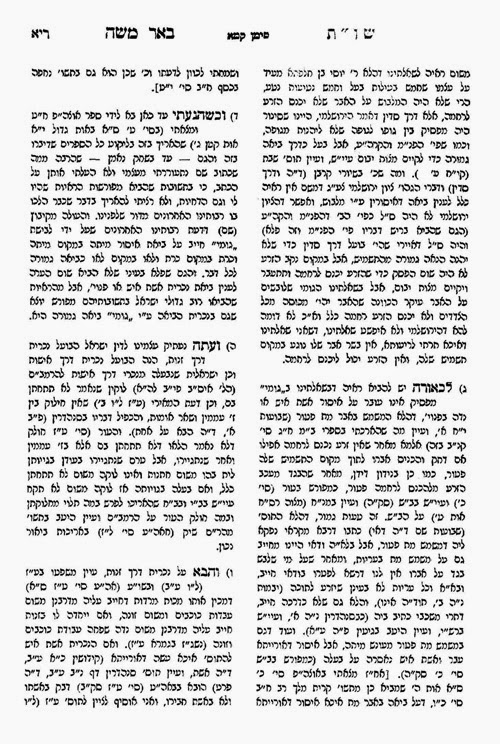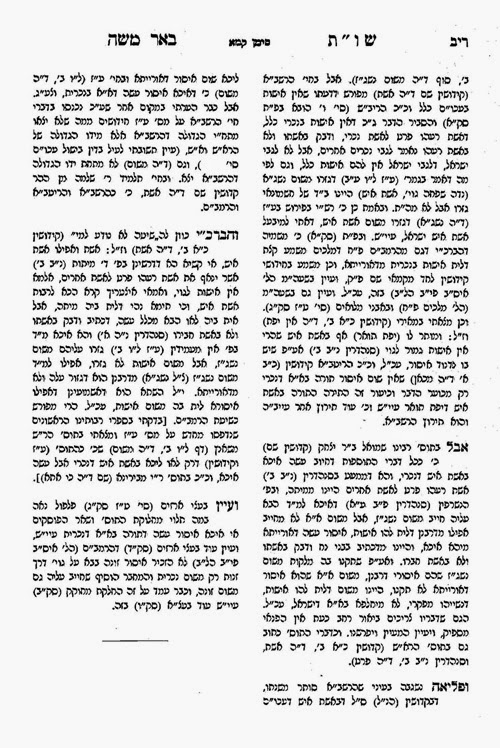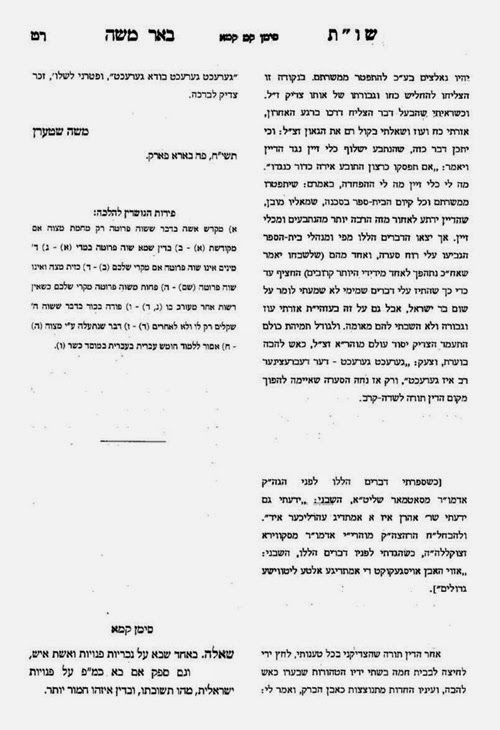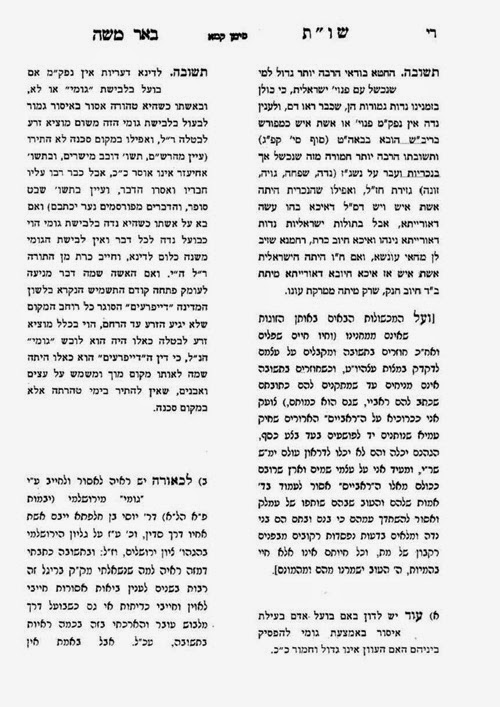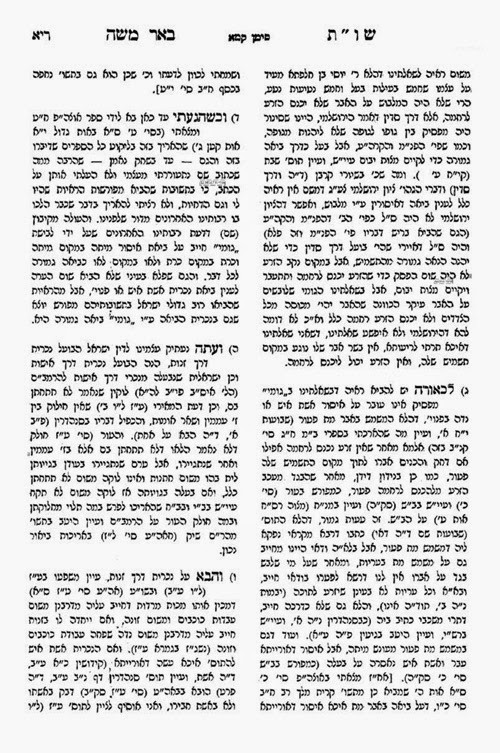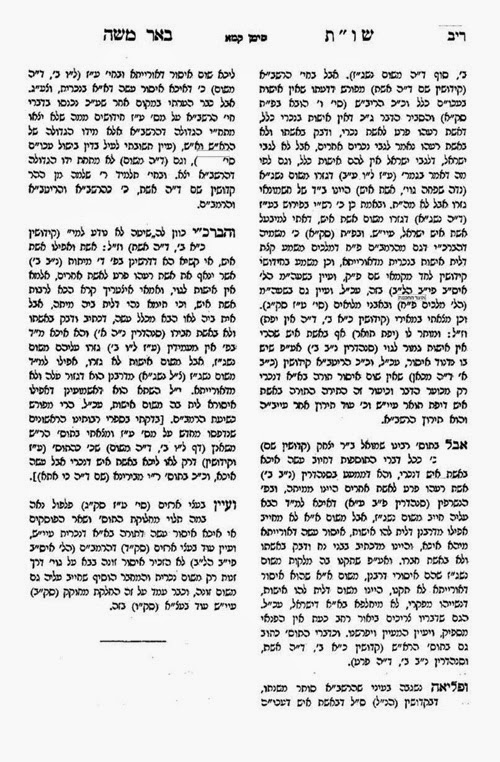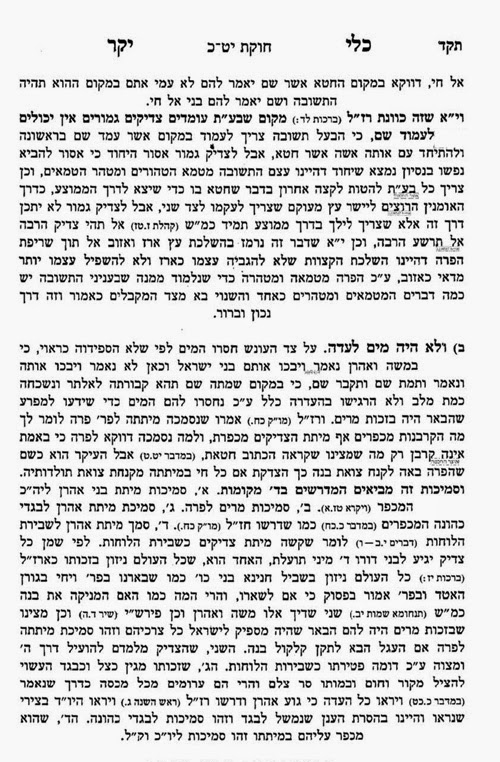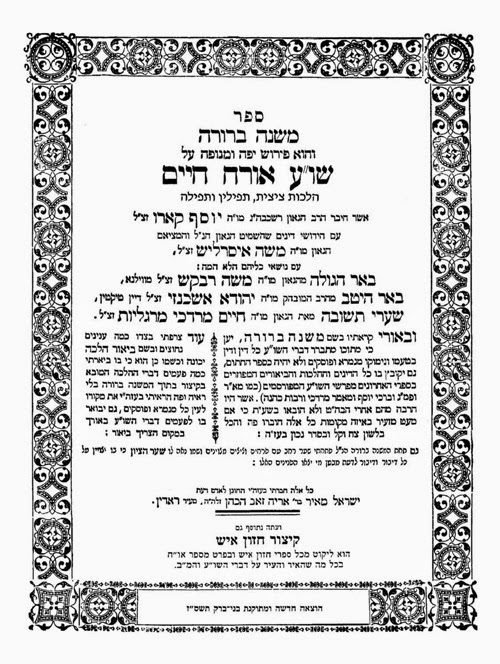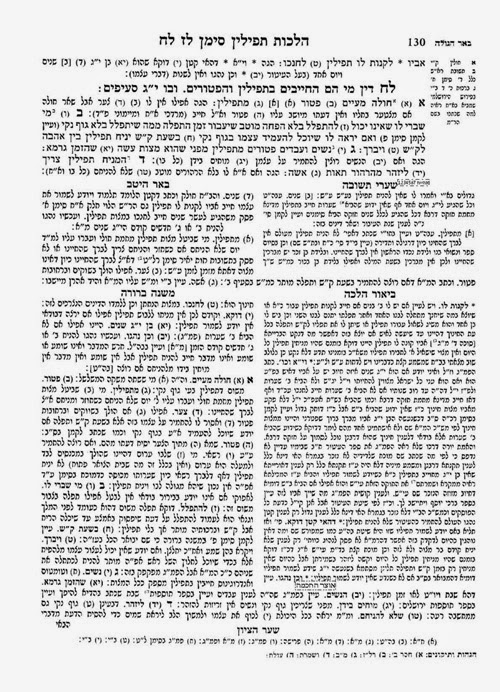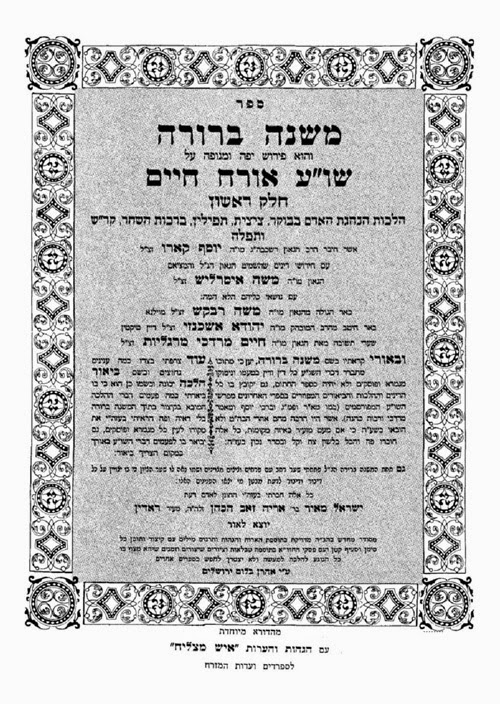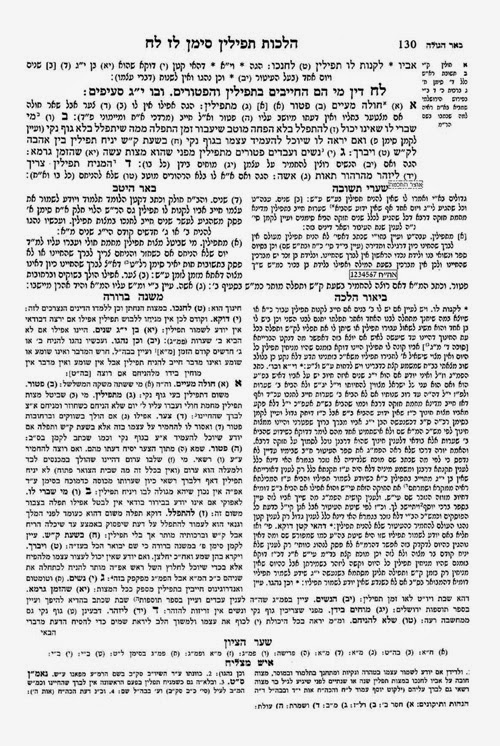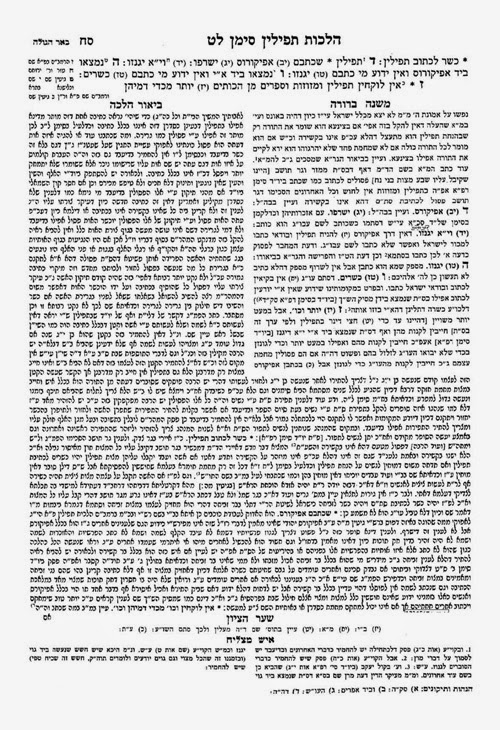She’ot Hityahadut – Review Essay
פאני נוידא, שעות התייחדות – ספר תפילה ומוסר
לנשות ישראל ולבנותיה לתפילה בציבור וביחידוּת ולכל הזדמנות בחיי
אישה, מבוא: עליזה לביא, תרגום מגרמנית: קטיה מנור, הוצאת ידיעות אחרונות
תשע”ד, 259 עמודים.
Fanny Neuda, She’ot
Hityahadut (שעות התייחדות), Hebrew edition,
introduction by Aliza Lavie; translation of prayers by Katja Manor, Tel-Aviv:
Yediot Aharonot, 2014, 259 pages
By: Yael Levine
The
author holds a Ph.D. from the Talmud department at Bar Ilan University. She is
the author of numerous articles related to women in Judaism. She recently
published “Tefillot Li-Tevilla”.
The
last decade has witnessed a renewed interest in Europe, the United States, and
Israel, in the compilation of prayers Stunden der Andacht, composed by
Fanny Neuda (1819–1894). Highlights of this renaissance will be currently
mentioned. Bettina Kratz-Ritter published several scholarly studies relating to
Neuda and her works. Some prayers from Stunden der Andacht were
published in Hebrew translation in Tefillat Nashim (Tel-Aviv: Yediot
Aharonot, 2005), edited by Aliza Lavie. An English edition, Hours of
Devotion, was published by Dinah Berland (New York: Schocken Books, 2007). An abridged edition
in Czechoslovakian was published in 2008. The Open Siddur Project
transcribed one of the German editions. Recently, a Hebrew translation of the
work, the subject of this review, was published. The introduction was written
by Dr. Aliza Lavie, and the translation of the prayers was carried out by Katja
Manor.
However,
despite the fact that Lavie states in the introduction that the work offers a
translation of the first edition published in 1855, a scrutiny of the
translation reveals that, in actuality, this is a translation of the second
edition published in 1858. The latter edition was re-edited by Neuda herself
and contains many additions and changes. Additionally, the introductory
material to the Hebrew edition contains factual errors, and consequently the
present edition can’t be relied upon.
Lavie
provides laconic biographical information concerning Neuda and her religious
stance. However, it’s possible to show that her husband had Reform leanings.
While we aren’t in possession of any direct evidence concerning her own religious
practices, her milieu of acquaintances was progressive and Reform. This
religious environment is not conveyed in the Hebrew edition, though it is
entirely essential for the reader to be familiar with.
Aliza
Lavie is presently a MK in the Israeli parliament. However, the volume under
discussion was, for the most part, prepared prior to the elections in January
2013. The current review doesn’t relate to political issues.
פאני נוידא, שעות
התייחדות – סקירה*
יעל לוין
מבוא
בשנת 1855 יצאה לאור
המהדורה הראשונה של קובץ התפילות שכתבה פאני נוידא (1819–1894) Stunden der
Andacht, שהתפרסם כשנה לאחר התאלמנותה.
הקובץ כולל קרוב למאה תפילות רשות בגרמנית לנשים, תפילות האמורות ללוות את האישה
היהודייה בשעת התפילה בבית-הכנסת, וכן לאורך מעגל השנה היהודי ומעגל החיים. חיבור
זה הפך פופולרי, התפרסם במהדורות אחדות, ובתקופת הכיבוש הנאצי יצאה מהדורה חדשה
שלו. הספר תורגם ליידיש ולאנגלית, ונדפס על מהדורותיו השונות כשלושים פעמים עד
לשואה. “שטונדען דער אנדאכט” יצא לאור לאחרונה בתרגום עברי הנושא את
הכותר “שעות התייחדות”. את המבוא לספר כתבה ח”כ ד”ר עליזה
לביא, ואת התפילות תרגמה קטיה מנור. כפי שמוזכר מפורשות בספר, דבר קיומו הראשוני
של ספרה של נוידא הגיע לידיעתה של לביא באמצעות כותבת שורות אלה במסגרת תפקידי
כיועצת אקדמית ל”תפילת נשים”.
אפשר
לציין באורח מעניין כי שנות חייה של פאני נוידא חופפות ברובן לאלה של חנה רחל
ורברמאכר (1806?–1888), מי שנודעה בכינוי “הבתולה מלודמיר”, שימשה
כאדמו”רית ובאה להתגורר בירושלים. דמות נוספת ששנותיה מקבילות במידה רבה לאלה
של נוידא היא רבקה ליפא אניקשטער (נפטרה בשנת תרנ”ג; 1893), בת היישוב הישן
שעלתה ארצה בשנות השישים של המאה התשע-עשרה. אישה זו פרסמה בשנת תרמ”ב (1882)
את הקונטרס “זכר עולם”, שעתיד היה לראות אור במהדורות אחדות. היא שימשה
מורת דרך לשתי נשים נוספות ביישוב הישן, רייצע בת מרדכי וטויבע פעסיל פיינשטיין,
שהילכו בדרכה והוציאו לאור אף הן קונטרסים בשלהי המאה התשע-עשרה.1
כפי
שנוידא מגוללת במבוא לספרה, הוא לא נכתב על ידה בבת אחת, אלא לפנינו יצירה
שהתהוותה על פני זמן, אשר את משכו המדויק איננו יודעים. התפילות חוברו לצורך
שימושה האישי, אולם היא נענתה כעבור זמן לעתירותיהם של רבים וטובים להדפיסן. מבחינה מסוימת קיים כאן תהליך דומה לזה שהתרחש
עם “ליקוטי תפילות” לרבי נתן, תלמידו המובהק של רבי נחמן מברסלב, עשורים
אחדים מוקדם יותר.
רבי
נתן החל לחבר בשנת תקע”ה (1815) תפילות רשות המיוסדות על תורותיו של רבי נחמן
ב”ליקוטי מוהר”ן” וב”ליקוטי מוהר”ן תנינא”, בהתאם
לדברי רבי נחמן עצמו לפיהם ראוי לעשות מהתורות תפילות. בראשונה חיבר רבי נתן
תפילות אישיות שהיו מיועדות לשימושו הפרטי, וכיוון שנכח שתפילותיו מכילות בקשות
לעניינים הנצרכים לכל אדם החליט להעתיקן ולהופכן לתפילות בעלות אופי כללי שיהיו
ראויות להיאמר בידי כל אדם. בשנת תקע”ז (1817) החל להעתיק את התפילות ולהפיצן
בקרב אנשי שלומו. הן התקבלו באהדה רבה עד שהפצירו בו להעתיק את כלל התפילות שחיבר
ולהדפיסן. מלאכת ההדפסה של הדפוס הראשון של “ליקוטי תפילות” החלה בברסלב
בראשית שנת תקפ”ב (1821), נמשכה על פני למעלה מחמש שנים, והגיעה לסיום בשנת
תקפ”ז (1827).2
המהדורה העברית
במסה
“דברים לאמהות האצילות ולנשים
בישראל”
פרי עטה של נוידא, הכלולה ב”שטונדען דער אנדאכט” והמופנית לנשי ישראל,
מביעה היא את מורת רוחה מכך שנשים אינן בקיאות בלשון הקודש ואינן מבינות את נוסחי
התפילות בבית-הכנסת ואת ספר הספרים בשפתם המקורית. הן מקדישות זמן ללימוד נגינה
בפסנתר, אך אינן מייחדות זמן ללימוד עברית, והיא מעלה את ההצעה שיקדישו שעה אחת מדי
יום למטרה נעלה זו.
על
פניו פרסום המהדורה העברית של “שטונדען דער אנדאכט” היה אמור להיות
מאורע משמח. אלא שאין אלה פני הדברים. כפי שנפרט, המהדורה בעברית רצופה טעויות
לאורך חומר המבוא, אמירות שלמות וקטעים שלמים אינם מוסרים מידע נכון, ואף נוסחי
התפילות דורשים הגהה. למעשה, לא שפר גורלם של תרגומי ספרה של נוידא בדורנו, שכּן
גם המהדורה באנגלית שראתה אור בשנת 2007 אינה נטולת בעייתיות מהותית. כך אפשר
לציין בין היתר שחלק מהתפילות עובד מחדש על בסיס התרגום האנגלי הישן, ולא תורגם מהמקור;
התפילות מוצגות בתור שירה ולא פרוזה, והמחברת מגישה מהדורה חלקית בלבד.
אני
מוצאת לנכון להעיר בשלב הזה את ההערה הבאה: “שעות התייחדות” היה מוכן
ברובו המכריע קודם שהמחברת ד”ר עליזה לביא נבחרה לכהן כח”כית, ופרסום
הספר נדחה בשל כניסתה לתחום הפוליטיקה, דבר שעיכב את השלמתו הסופית. לפיכך, הסקירה
הנוכחית מתייחסת לתקופה קודם היבחרותה.
“שעות
התייחדות” מתיימר לתרגם את המהדורה הראשונה של קובץ תפילותיה של נוידא,
כהודעתה של לביא לכל אורך המבוא. כך, בין היתר, לביא מודיעה מפורשות שהיא מגישה לקוראים את המהדורה הראשונה:
“בספר זה, אשר הסתמך – כאמור – על המהדורה הראשונה, משנת 1855”. אולם בפועל הנוסח
המוגש הוא של המהדורה השנייה משנת 1858, מהדורה שאינה מוזכרת כלל במהלך החיבור.
מהדורה זו כוללת הגהות ושינויי נוסח רבים מעשה ידי נוידא עצמה, ובכלל זה המסה המופנית
לנשי ישראל זכתה להרחבה ניכרת ומוקמה בסוף הקובץ.
ח”כ ד”ר עליזה לביא כותבת
במהלך חומר המבוא: “ספר התפילות, שעות התייחדות (הדגש במקור –
י”ל)… פורסם לראשונה בפראג בשנת 1855… ואף שאיני שולטת בשפה כלל, הבנתי
מיד את תוכן העניינים: הספר מכיל דברי מבוא של המוציא לאור, פתח דבר של המְחברת, ואת התפילות עצמן… בסוף הספר בחרה המחברת, פאני נוידא,
לפנות בקריאה על-זמנית לאימהות, לחנך את בנותיהן להיות בנות נאמנות וגאות לעם
ישראל”. תיאור זה אינו מתאים למהדורה הראשונה. מתברר שלביא לא הייתה מודעת
להימצאותם של שינויים בין שתי המהדורות הראשונות, ואפשר לקבוע שהיא לא עיינה
במהדורה הראשונה, ולא העלתה על דעתה את האפשרות שייתכנו הבדלים בין המהדורות. ההחלפה בין
המהדורות היא עניין עקרוני, וזהו מעשה שאינו ליגיטימי גם בפרסום שאינו מתיימר
להיות אקדמי במובהק.
כאמור,
נוידא עצמה ערכה הגהות למהדורה הראשונה ששולבו במהדורה השנייה. לעתים נוסחיהן של
המהדורות הראשונות של חיבורים משופרים יותר, אולם במקרה הנוכחי קיימת אמנם האפשרות
לעשות שימוש במהדורה השנייה כבסיס למהדורה העברית, אולם חובה להודיע על כך. יחד עם
זאת, דרושה הגהה נוספת של נוסחי התפילות עצמם שכּן ניתן להצביע בין היתר על תרגום
בלתי מהימן ב”תפילת הנערה הצעירה”. המילים במקור הגרמני “בריאים בנפשם ובגופם” תורגמו
כ”בריאים בגופם ובנפשם”. אולם הנוסח בתפילות “מי שברך” לחולים
הנו “רפואת הנפש ורפואת הגוף”, וכן הוא בתפילות נוספות לחולים. אין ספק
שנוידא כיוונה את דבריה לתפילות מעין אלה, ולא הייתה הצדקה לשנות. חילוף זה עשוי
לכאורה להצביע על ריחוקו של המתרגם מעולם הליטורגיה, או שמא על אי-הכרות עם תפילות
אותנטיות. משום כך, יש צורך לעבור ולבדוק את נוסחי התפילות על ידי אדם הבקי במקורות שיוכל לעמוד על הרמזות למקורות.
חשוב לציין כי בשנת 1855 יצאה לאור
מהדורה נוספת של “שעות התייחדות”, מהדורה מקוצרת בת שלושים-וחמש תפילות,
הנושאת את הכותר Andachtsbuch für israelitische
Frauenzimmer. 3 דבר זה לא מאוזכר אצל לביא כלל. לביא מזכירה
במבוא שבשנת 1859 יצאה לאור מהדורה מתורגמת ליידיש, ובה נכללו שלושים-וחמש תפילות בלבד.
לאמיתו של דבר, זהו תרגום של המהדורה המקוצרת מ-1855, ובשנת 1859 יצאה לאור מהדורה
נוספת עם תרגום שלם של מהדורת 1858. קיימים
שני תרגומים לאנגלית של “שטונדען דער אנדאכט”, האחד יצא באירופה (שנת
הפרסום המדויקת אינה ידועה) והאחר בארה”ב בשנת 1866. לביא מזכירה את אחת
המהדורות בלבד.
בשנת
1870 יצאה לאור בברסלאו מהדורה נוספת של “שטונדען דער אנדאכט”. מהדורה
זו מצומצמת יותר בהיקפה, וכוללת כשמונים תפילות. יש בה תפילות חדשות לנושאים
קיימים וכן תפילות אחדות בנושאים חדשים, כגון תפילה ליום הולדת ותפילה בשעת מגיפה.
לעומת זאת, הוצאו ממנה תפילות שונות, כגון התפילות לכל אחד מימי השבוע, התפילה
להפרשת חלה וחלק מהתפילות המרובות בענייני חולי. לביא כותבת שנוספו במהדורה זו
תפילות חדשות, אולם לא ציינה שאף הוצאו תפילות. מהדורה זו ממתינה להיחקר. יצוין
עוד כי מהדורת 1870 נדפסה פעמיים נוספות, ומהדורה שלישית מוגהת על ידי נוידא
פורסמה בשנת 1890. עם זאת, המהדורה הקלאסית משנת 1858 היא זו שקנתה לה שביתה
והמשיכה להידפס לאחר מכן.
בנובמבר 2008 פורסמה בשפה הצ’כית
מהדורה חלקית של ספרה של פאני נוידא, הכוללת למעלה משלושים תפילות. מסִּיבה בלתי ברורה לביא לא מזכירה מהדורה זו, למרות שהיא עצמה
מודעת לה ומוזכרת בה.
רנסנס
מזה כעשור
בהקשר
זה יש להזכיר כי בפתח “שעות התייחדות” נאמר שעליזה לביא החזירה את
החיבור לארון הספרים היהודי. אולם יש לפקפק בקביעה זו ואין לקבלה, משום שקיים
רנסנס של ממש בחיבורה של נוידא מזה למעלה מעשור בארה”ב ובאירופה. כך בטינה
קראץ-ריטר פרסמה, החל משנת 1985, מחקרים אחדים על נוידא. תפילות נבחרות משולבות
באנתולוגיה הידועה של כתבי נשים יהודיות, Four
Centuries of Jewish Women’s Spirituality,
שיצאה לאור בארה”ב במהדורתו הראשונה בשנת 1992, ומשם בין היתר נודע שמה. תפילות
אחדות פורסמו בתרגום עברי ב”תפילת נשים”, שיצא לאור לראשונה בשנת 2005,
בעריכתה של לביא. בשנת 2007 יצא לאור חיבורה של דינה ברלנד, ובשנת 2008 יצאה לאור המהדורה
החלקית בשפה הצ’כית. כן יצאו בשנים האחרונות מהדורות פקסימיליה של הדפסות שונות של
החיבור בגרמנית ושל התרגום האנגלי משנת 1866, והפרויקט המקוון The Open Siddur
Project שיכתב לאחרונה את מהדורת
1858.
אם
כן, ללביא שמור חלק כלשהו ברנסנס של ההתעניינות בכתביה של נוידא, אולם במפורש לא
בלעדיות. כאמור, תפילות נבחרות אחדות התפרסמו ב”תפילת נשים”, ובערב יום
הכיפורים תשס”ח (2007) קיבלה לביא, כדבריה במבוא ל”שעות התייחדות”,
החלטה לפעול לתרגום הספר במלואו, למרות שהעניין עלה במפורש לדיון קודם למועד זה.
אגב, גם הנסיבות שהביאו את לביא לערוך את “תפילת נשים” מעוגנות במועד של
ערב יום הכיפורים, לפי מה שכתבה במבוא לקובץ זה.
לביא מציינת כי בשעה שהחלה להתחקות אחר
עקבותיה של פאני נוידא, והקישה את שמה במנועי החיפוש בעברית, לא עלה בידה למצוא
מידע או אזכורים על אודותיה. וכאן עולה השאלה, מאימתי הימצאות מידע בגוגל היא אמת
מידה עבור חוקר? חוקר אמור להתמקד בעיקר בחומר ממקורות כתובים. ואמנם, חיוני לומר
שלביא אינה מסתייעת במכלול הספרות הקיימת בנושא, אלא בחלקו בלבד.
לפאני
נוידא כאלמנה לא היו האמצעים לפרסם את ספרה, ולואיזה פון רוטשילד (1820–1894)
סייעה בידה. נוידא הקדישה לה עמוד הוקרה בפתיחת הספר. לואיזה פון רוטשילד הייתה אשת מאיר קרל פון רוטשילד
(1820–1886), בתו הצעירה של נתן מאיר פון רוטשילד מאנגליה, ואף הוא מוזכר בעמוד
ההוקרה. היא נישאה למאיר קרל פון רוטשילד מפרנקפורט, מקום אליו עברה עם נישואיה
בשנת 1842. עליזה לביא לא זיהתה את העניין, וסברה שמדובר בעמוד הנצחה לדמות אחרת
ממשפחת רוטשילד. משום כך גם תהתה לגבי אזכור העיר פרנקפורט בעמוד זה.
“הערת המערכת” ב”שעות
התייחדות” מוסרת ש”סדר התפילות מובא כפי שקבעה פאני נוידא”. אולם
דבר זה אינו מדויק, ומיקומן של שתי תפילות המופיעות לקראת סוף הקובץ שוּנה למיקומים הנראים כמתאימים יותר. הכוונה ל”תפילה לראש השנה
וליום הכיפורים לפני תפילת ‘עלֵינו'” ו”תפילה לחג הסוכות, בהקפות עם
הלולב והאתרוג”. חובה היה לסייג את האמירה הכללית, ולהודיע לקוראים על
השינויים.
אפשר
להצביע על שגיאות אחרות בחומר המבוא. ברשימה הביבליוגרפית לביא כוללת רישום של
המהדורה הראשונה ושל המהדורה שיצאה לאור בידי ד”ר מרתה ורטהיימר בשלטון
הנאצי. בכל אחד מהפריטים הללו מצויה שגיאה בהעתקה. בהערת שוליים לביא מציינת את
המהדורה הראשונה, בהזכירה את הוצאת ברנדייס, ולא פאשלס. זאת בשעה שהמהדורה הראשונה
של הוצאת ברנדייס הייתה בשנת 1868. לביא הכניסה שינוי טכני למבואהּ של נוידא.
במהדורה הראשונה והשנייה תאריך כתיבת
המבוא מופיע בסוף, דבר שמבטא את הנוהג בספרים בעבר. אולם לביא העבירה זאת לראש
המבוא, למרות שלא היה אמור לחול כאן שינוי כלשהו. בסוף המבוא הגרמני כתוב
“הסופרת”, אולם לביא שינתה וחתמה את המבוא בשם “פאני נוידא לבית
שמידל”. שמה זה של נוידא מופיע מעל גבי שער החיבור, אולם גם שינוי כזה מזקיק
הערה.
אחת העדויות המעשיות שלביא מביאה לגבי
אמירת תפילות מתוך “שטונדען דער אנדאכט” היא עדותה של גב’ יהודית וירצבורגר מתל-אביב בשם בעלה, שלא
נזכר בשמו. לדבריה, סבתו נהגה לומר במהלך שנות מלחמת העולם הראשונה את “תפילת
אם שבנהּ משרת בצבא” בשפה הגרמנית, וכן נהגה אמו בשעה שבניה שירתו
בצה”ל. למעשה, שמעון וירצבורגר עצמו התייחס לעניין זה קודם לכן בדברים שכתב
בעיתון “הצופה” בשנת 2003. 4 הוא מציין שם שהתחינה הנזכרת
נאמרה בידי סבתו במלחמת העולם הראשונה בשעה שארבעת בניה היו בצבא הגרמני, וכן אמו
אמרה אותה במהלך מלחמת השחרור בכל עת שאחיו או הוא היו מגוייסים.
מקורות
השראה
ספר
התפילות של נוידא לא נוצר יש מאין, ואפשר לעמוד על מקור השראה מובהק ששימש לו
בסיס. הכוונה לקובץ התפילות לנשים יהודיות בצרפתית “אמרי לב”, שיצא לאור
לראשונה בשנת 1848. חיבור זה היה פופולרי מאוד בקרב יהודי צרפת, ויצא לאור בשנת
1856 בתרגום אנגלי מעשה ידיה של הסטר (אסתר) רוטשילד. נודעת השפעה ברורה של
“אמרי לב” על “שטונדען דער אנדאכט”. ב”אמרי לב”
מובאת קשת תפילות רחבת-היקף, ולמרבית מנושאי תפילותיה של נוידא מצויות הקבלות
בחיבור הזה, והתפילות מובאות בעיקרן בסדר זהה ל”אמרי לב”. ניכרים גם
דמיונות תוכניים שונים בין התפילות בשני הקבצים. כמו כן, בראש כל תפילה
ב”אמרי לב” מובא כתוב מקראי, ונוידא אימצה תבנית כללית זו. לביא מאריכה
את הדיבור על הייחודיות כביכול של תפילתה של נוידא לחג השבועות, תפילה המוסבת על קריאת
עשרת הדיברות והמתייחסת באופן פרטני לכל אחת מהדיברות, ואולם הקבלה מובהקת אליה
מצויה ב”אמרי לב”.
לביא
מציינת כי פאני לא הייתה הראשונה שחיברה קובץ תפילות בגרמנית, והיא מונה שלושה
קבצים כאלה שחוברו בידי גברים. השני מביניהם הוא “תחנוני בת יהודה”, שיצא
לאור בשנת 1846, ולגביו לביא לא מציינת מי היה מחברו. והנה, זהו לא אחר ממאיר הלוי
לעטעריס (1800?–1871). לביא מזכירה דמות זו במקום אחר ב”שעות התייחדות”
בהקשר לחמש תפילות שבחרה שלא לתרגם. לדבריה, שתיים מהן ניטלו מתוך מחזור התפילה
ליום כיפורים של לעטעריס, ושלוש האחרות נתחברו בידי מחברים שונים.5 אולם
לביא לא זיהתה ששלושת הטקסטים האלה מופיעים ב”תחנוני בת יהודה” וכן בחיבור
קודם של לעטעריס משנת 1845. 6 אחת התפילות ב”תחנוני בת
יהודה” מובאת ב”תפילת נשים”, ושם ההתייחסות למחבר היא כ-ד”ר
מקס לטריס. בנוסף, כותר המהדורה המקוצרת של ספרה של נוידא משנת 1855 איננו זהה
למהדורה הראשונה השלימה,7 אך זהה לתחילתו של כותר המשנה של ספרו של
לעטעריס.8 לביא כתבה ב”תפילת נשים” כי נוידא בספר תפילותיה בחרה
לעצמה את פסוקי הפתיח. אולם אין הדברים האלה מדויקים. היא חרגה אמנם מהכתובים
המובאים ב”אמרי לב”, אולם מכל מקום ניכרת השפעה. וכך אפשר לציין ביחס
ל”תפילת הנערה הצעירה” כי “אמרי לב”, “תחנוני בת
יהודה” ו”שטונדען דער אנדאכט” עושים שלושתם שימוש באותו הפסוק
עצמו, “שקר החן והבל היופי”. תפילה להפרשת חלה מצויה אצל נוידא ואצל
לעטעריס, אך לא ב”אמרי לב”, ובשניהם אין כתוב פותח. התפילה על עשרת הדיברות
אינה מצויה בשלושת החיבורים בגרמנית שמנתה לביא, אלא ב”אמרי לב” בלבד.
ב”שטונדען
דער אנדאכט” אין תפילה לטבילה, זאת בדומה לקבצי התפילות לנשים בשפות לעז שלא
כללו תפילות לעניין זה. לעומתם, מרבית קבצי התחינות ביידיש כללו תפילות בנושא זה.
אם כן, פאני נוידא החרתה-החזיקה אחרי קבצי התפילות בלעז בבחירתה שלא לכלול תפילה
בנושא טבילה.
העמידה
על מקורות השראתה של פאני נוידא אף מבטלת את האפשרות להחשיבה כ”פורצת
דרך”, כפי שלביא מבקשת לטעון. נוידא צעדה בעקבות קודמיה, שאבה במידה מרובה מ”אמרי
לב” את הדגם הכללי כמו גם תכנים מסוימים, ובמידה מינורית הושפעה מ”תחנוני
בת יהודה”. תפילותיה של נוידא משקפות אמנם נקודת מבט נשית, אולם גם בקבצים שעליהם
הסתמכה מובאים רעיונות דומים לאלה שהזכירה, כגון לדוגמה לגבי “תפילת הרעיה
האומללה”, באופן שאין ניכרת בספרה בשׂורה חדשה או מהפכה של ממש.
כאן
המקום לציין כי נודעת בעייתיות בכל הקשור לתכנים המובעים אצל נוידא ב”תפילת
הרעיה האומללה”, וכן בתפילה המקבילה ב”אמרי לב”. לקראת סוף התפילה
נאמר בתפילתה של נוידא: “‘אני מוכנה ומזמנה להעלות לקרבן את הנאותי; לשקד על
מלאכות הבית בשקט, ובארך רוח למלא את החובות המטלות עלי. ברך ובעדנה לקבל את
התוכחה המרה, את המלים המרות והפוגעות, ולכבש את לב בעלי”. כלומר אישה זו
מוכנה להיות אישה כנועה ובמקרה של בעל מתעלל מוכנה להבליג ולספוג התנהגות מתעללת.
אין זה מוטיב שפמיניסטיות בזמננו, לרבות לביא עצמה, סומכות את ידיהן עליו.
בהקשר
לדיוננו בדבר מקורות השראתה של נוידא, חיוני להידרש לכותר Stunden der Andacht. הכותרת אינה מקורית לה; זהו כותר חיבורו
הפופולרי של Heinrich Zschokke המביא את עיקרי האמונה
הנוצרית בדרך מוסרית ופילוסופית והמחזיק כרכים אחדים, חיבור שיצא לאור בשנים
1809–1816. כותרתו של התרגום האנגלי Hours of
Devotion
זהה לכותר שניתן לשתי המהדורות באנגלית של ספרה של נוידא. יש לציין עוד כי בשנת
1834 הוציא לאור הרב המשכיל והמתקדם שמשון וולף רוזנפלד (1780–1862) חיבור בן
כרכים אחדים, הנושא את הכותר Stunden
der Andacht für Israeliten, והוא מעין חיבור
יהודי המקביל לחיבור הנוצרי הנזכר.
סביבתה האידיאולוגית-דתית
של נוידא
לביא מייחדת מקום כלשהו בדברי המבוא להזכרת הוריה של פאני,
אחיה ובעלה. אביה, הרב יהודה שמידל, שימש כרב, ואימהּ, נחמה קרפלס, באה ממשפחת
רבנים. אחיה של פאני, הרב אברהם-אדולף
נוידא, אף
הוא שימש כרב וכן בעלה, הרב אברהם נוידא. לביא מתייחסת לפולמוס שהתעורר סביב
היבחרותו של בעלה לכהן כרב בלושיץ, ובהקשר זה מציינת את ההתנגדות שנבעה גם מתוקף
העובדה שהיה אחד משלושה רבנים במורביה שדרשו בשפה הגרמנית. אולם אין הדברים
הלאקוניים הללו משקפים את מלוא העניין. בשנת
1841, לאחר מאבק ממושך עלה בידו לכהן כרבה של לושיץ (ב”תפילת נשים” כתוב
במִשְׁגֶּה שהיה רבה של ניקולסבורג), מקום אשר מנה בראשית המאבק לכהונתו בשנת 1835 כארבע-מאות יהודים. אולם גם אם בעלה החזיק בסופו של דבר בתפקיד זה, היה הוא בעל
דעות מתקדמות, ותמך בהכנסת תיקונים מסוימים בדת. כך בתשובה שכתב צידד בשימוש בעוגב בבית הכנסת בשבת ובהעמדת הבימה
בקדמת בית הכנסת, כמנהג המתקנים. תשובה זו יצאה לאור בשנת 1845 בקובץ שנערך מטעם
התנועה הרפורמית בעיר פאפא (Pápa) שבהונגריה.9 כמו כן, אחיה
של פאני היה רב בעל דעות ליברליות. שיקוף זה אינו עולה מתיאורה של לביא, למרות
שהקוראים רשאים ואף מחויבים להכיר את האוריינטציה הדתית של הדמויות הפועלות
הקשורות לחיבור.
יתירה מכך, אין בידינו אמנם לדעת בבירור מה הייתה השקפת עולמה הדתי של
פאני נוידא, אולם אפשר לקבוע שמחברי הכתבים שאותם היא מצטטת היו מחוגים משכיליים
ומתקדמים. כאמור, פאני נוידא מביאה לרוב כתוב מקראי כפתיח לתפילות, אולם בתפילות
אחדות חרגה מנוהגה זה, והביאה תוכן בעל אופי הגותי. פתיח אחד נטול מתוך כתביו
של שלמה מימון. פתיח אחר מביא קטע מכִּתבי גבריאל רייסר (1806–1863),
מראשי האמנציפציה. כפי שהזכרנו, נוידא
שאבה טקסטים אחדים מ”תחנוני בת יהודה”, ואחד מהם אף הוא נטול מחיבור של
רייסר. טקסט אחר לקוח מהקובץ “שירי ישורון”, שיצא לאור בשנת 1829, וחובר
בידי הרב המתקדם יוסף יאהלזאן. לעטעריס עצמו, שממנו שאבה נוידא, נמנה על ראשי המשכילים
בגליציה. מתרגם המהדורה האנגלית של ספרה של נוידא שראתה אור בארה”ב, מוריץ
מאייר, היה רב רפורמי. אם כן, הסביבה האינטלקטואלית שאפפה את נוידא הייתה סביבה של
יהודים ליברליים ומתקדמים.
על רקע תיאורנו זה עולה גם השאלה
באיזו מידה אמנם רלוונטי ונחוץ לנשים דתיות בזמננו, בדור אתחלתא דגאולה, לאמץ
תפילות מעין אלה כמושאי הזדהות. יש באמתחתנו אוצר תפילות נאות לנשים בשפה העברית
המפוזרות בקבצים שונים. חלקן בלבד נקבצו בזמננו לאסופות תפילה. אלה הן תפילות
שצמחו באופן אורגני מתוך הוויה יהודית אותנטית. מבחינה זו, התחינות ביידיש מבטאות
השקפה יהודית מקורית הרבה יותר מאשר קבצי התפילות בלעז. כאן המקום להעיר כי גם אם
לעתים מובאים בתחינות ביידיש מוטיבים שאיננו יכולים להזדהות עמם לגמרי בזמננו,
כגון נוסחים שיש בהם בקשה מפורשת לבנים זכרים, בהיותן תפילות רשות רשאים אנו לשנות
ולומר נוסח אישי יותר.
מלבד
שימושה בכתובים מקראיים מקדימים לתפילות, נוידא מסתייעת לעתים במהלך התפילות
במקורות מובהקים מאוצרותינו, וכן ישנם לפרקים הרמזות ושיבוצי מקורות. עם זאת,
הסתמכותה על מקורות ספציפיים אינה כה רבה, וחלקים גדולים מקובץ התפילות כוללים
רעיונות כלליים שאינם מעוגנים במקורותינו. אין בידינו ידיעות חיצוניות לגבי שיעור
למדנותה של נוידא. על בסיס תוכני הקובץ אפשר לומר שהייתה לה ידיעה נאה בתנ”ך,
אך אין בכוחם של המקורות הבאים לידי ביטוי בספר להצביע על בקיאות וידענות מופלגות
במקורות היהדות.
סיכום
בבואו
של מחבר להוציא לאור ספר מוטלת עליו האחריות לוודא שחיבורו יהיה נקי מטעויות. הספר
הנדון בסקירה זו לא היה ראוי להתפרסם במצבו הנוכחי, ויש לצפות לפרסום מהדורה
מתוקנת. המצב שבו נתון הקובץ מלמד גם על אוזלת ידה של התפיסה לפיה אין חובה לדקדק
כשמדובר בחיבור פופולרי. הספר לא עבר לקטורה של מומחים, דבר שיכול היה למנוע את
הטעויות. זו מהדורה שאין אפשרות להסתמך עליה ועל מהימנותה. אני תקווה שהסקירה
הנוכחית, הפורטת את הבעייתיות בספר, תלווה את מי שתחת ידיהם מצויה המהדורה
הראשונה.
הערות
1. ראו לאחרונה יעל לוין, ‘”דיינו שה’ מחדש
את כוחותיי תמיד”‘, מקור ראשון, יום שישי, 11 באפריל 2014, י”א בניסן
תשע”ד, מוסף פסח, 870, עמ’ 8, 10.
2. ראו בהרחבה יעל לוין, שים שלום: תפילות לשלום
העולם, אסופה מתוך “ליקוטי תפילות”, הוצאת קורן: ירושלים 2009, מבוא,
עמ’ 2–4.
3. זה
כותר המהדורה השלימה: Fanny Neuda, geb. Schmiedl, Stunden der Andacht: ein
Gebet- und Erbauungsbuch für Israels Frauen und Jungfrauen, zur
öffentlichen und häuslichen Andacht, so wie für alle Verhältnisse des
weiblichen Lebens, Prag 1855. וזו כותרת
המהדורה המקוצרת: Andachtsbuch
für israelitische Frauenzimmer zur öffentlichen und häuslichen Erbauung in
allen Verhältnissen des weiblichen Lebens, Prag
1855.
4. שמעון
וירצבורגר, “התחינה החסרה”, הצופה, א’ בטבת תשס”ד, סופרים וספרים,
עמ’ 15. וראו את מאמר תגובתה של כותבת שורות אלה: יעל לוין, “תפילה לשלום
המתגייסים לצה”ל והמשרתים בו”, הצופה, ח’ בטבת תשס”ד, עמ’ 12.
5. שלושת הטקסטים הללו
מובאים במהדורת 1855 ובמהדורת 1858 בעמ’ 137–142.
6. M. Letteris, Erbauliche Betrachtungen, hebräische
Sagen und Dichtungen, Prag 1845, pp. 29–30, 34–37
7. ראו לעיל, הערה 3 והטקסט לידה.
8. הכותר הלועזי של
המהדורה הראשונה של “תחנוני בת יהודה” (מילים אלה מופיעות תחילה בראש
העמוד) הוא: Andachtsbuch
für israelitische Frauenzimmer zur öffentlichen und häuslichen Andacht in allen
Verhältnissen des Lebens,
als Jungfrau, Braut, Gattin und Mutter, Prag 1848. אולם המילה Andacht הוחלפה בהמשך עם המילה Erbauung. מבין מהדורת החיבור
מצויות בספרייה הלאומית בירושלים המהדורה הראשונה ולאחר מכן המהדורה החמישית משנת
1852, ובה מופיע השינוי בכותר. הן חיבורו של לטריס והן ספרה של נוידא נדפסו בבית
הדפוס של וולף פאשלס (Wolf
Pascheles) בפראג.
9.
Zulässigkeit und Dringlichkeit der
Synagogen-Reformen, Wien 1845, pp. 85–89
—
© כל הזכויות שמורות ליעל לוין
